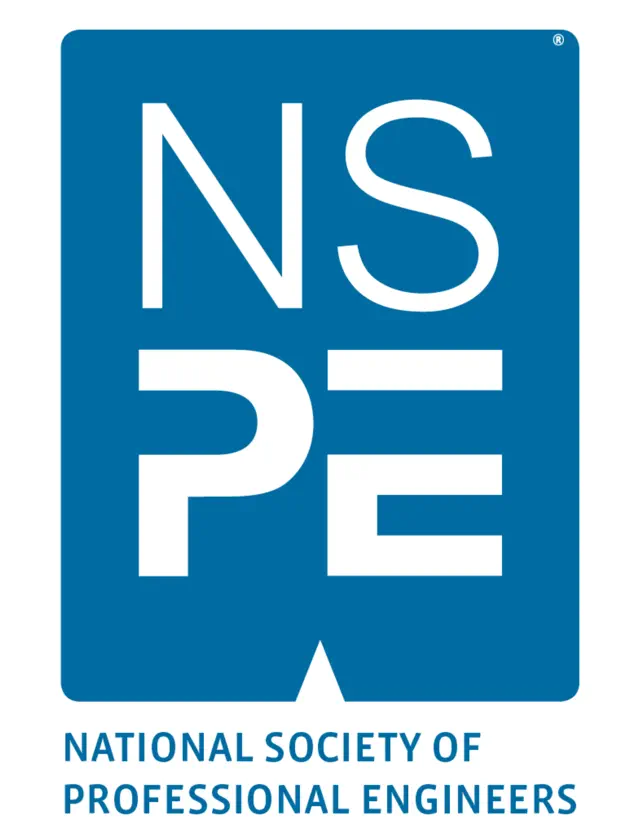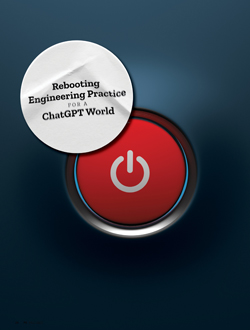Fall 2023
Elevate Your Leadership By Fostering Courageous Connections
By Paula E. Miles, P.E., PCC and Natalie J. Sayer, MSMSE, PCC
The Oxford Languages dictionary defines the act of fostering as encouraging or promoting the development of something, typically something regarded as good. To be courageous is defined as being undeterred by danger or pain. To foster courageous communication and connections not only speaks to leaders leaning into conversations, despite real or anticipated pain (read: fear), but it also points to a leader’s role in creating an environment where honest communication can even exist. In this article, we will explore leveraging common engineering mindsets and skills in giving and receiving feedback, regulating your emotions, and networking strategically.
SCOTT’S SITUATION
Courage. Scott didn’t use this word to describe the feeling he hoped to have during the upcoming quarterly performance appraisal conversations with his team. In our coaching session he shared what he called a "low level dread" that seemed to increase as the conversations neared.
The Coaching Session
"Scott, I heard you say that you’re not looking forward to the upcoming performance review conversations. What is it about these conversations that you’re dreading?" Well, it’s not all the conversations. Talking about things they can improve becomes a debate with two of them. It doesn’t matter how I word it. There isn’t even any money attached to these reviews – they’re just opportunities to make adjustments! I’ve been considering just telling them that everything is fine and I hope they get their act together before the annual appraisal. I know. That’s the coward’s approach, which doesn’t help them or the company.
"What do you believe would help you get through these review conversations with the two supervisors in a way that is positive for both them and the company?" Well, my director told me to man up, but not quite that nicely! I want to feel like I’m on solid ground when I tell them what I need from them. Also, that I’m ready with the right responses when they push back.
What Scott needed was to foster courageous conversation.
In the book Say What You Mean, author Oren Jay Sofer states that human communication is complex and we have to negotiate patterns of relating that have been established, whether between two individuals or between the groups and communities to which we belong. Both a leader and their direct reports’ feelings and reactions to criticism, whether constructive or not, are influenced by past experiences with feedback from family, employers, and cultural groups. So, how might you effectively navigate this potentially thorny landscape without shredding important relationships or being shredded? Sofer goes on to propose a conceptually simple three-point framework to apply: 1) lead with presence; 2) come from curiosity and care; and 3) focus on what matters. (Sofer, p. 5). Let’s see how this framework plays out with our leader, Scott.
The Session Continues
"Scott, tell me how you’re preparing for the feedback sessions with your direct reports." I have this year’s performance goals. I have the project milestones for this quarter and their progress to those milestones. For some, I will share comments that I’ve received about their work. I’ve made sure that I have correct information about milestone achievements, so there shouldn’t be any arguments. But there will be, especially with those two!
"Your preparation seems sound. Preparation and planning are clear strengths of yours. How do you know your direct reports are prepared for their review conversations? Well, they accepted the meeting invitation. They know their goals and quarterly milestones. We follow the same agenda every quarter. They should be ready.
"You’ve shared that you’re dreading these conversations. How might they be dreading their conversation with you, even though you believe they are prepared?" Maybe it’s the comments they believe I will share with them. You know, last quarter I shared some comments about their work from several stakeholders and external teammates. They seemed to be rattled by those comments.
"Which of your direct reports did those comments apply to?" The two that I’ve been talking about. Dang. I sprung those comments on them. Now that I’m thinking about it, the comments fueled the debates.
"What might you do differently this quarter to prepare, Scott?" I’m going to send them the comments ahead of time. No surprises. It’ll also give them time to think and prepare. Wait. First, I’m going to review the comments again and decide if they need to be shared at all. I’m already thinking that at least one of the comments doesn’t matter.
"How are you feeling about taking an extra step in preparation?" Much better than I did before I came here!
Scott is learning that in addition to preparing differently for feedback discussions and ensuring his direct reports are also ready, he must fully engage in the conversations. If he wants to lead with presence, he can’t simply go on autopilot during vital quarterly and annual performance discussions. He is also learning to be curious about why the conversations with two direct reports devolve, while the others don’t. Finally, he is discovering how important it is to focus on what really matters to achieve his desired outcomes. Every piece of feedback may not be constructive or necessary to share. It’s within his scope of leadership to discern importance, share what might be useful, and discard the rest.
The Oren Jay Sofer framework is equally applicable to those who are on the receiving end of feedback and constructive criticism. Being fully present during the conversation – listening to understand, not waiting to jump in – is critical. It’s difficult to formulate a meaningful response when you’ve only heard a portion of what is said. Being curious is important. Asking questions can help you clarify what the person is trying to communicate to you. Again, it’s difficult to ask relevant questions if you’ve only heard a portion of what’s been said to you. Focusing on what matters means working to understand the "need" underneath the feedback (Sofer, p. 112). For example, in a passing encounter with your manager, she says to you, "I know you’ve been coming into the office Tuesday through Thursday, but I need you to start coming in on Monday starting next week." You’ve arranged your work schedule to get everything done Tuesday through Thursday, and you depend on working from home on Monday and Friday. Why does your manager need you to come in on Mondays? You might ask the manager how working from home on Mondays is affecting the team’s performance. Her response could clarify the specific issue underlying the "need" and give both of you information to make a mutually agreeable decision about your work schedule.
THE QUIET LEADER
Liz came into her session looking pensive. She had messaged earlier that she wanted help making sense of her 360 feedback results. The 10 people who contributed to the assessment included Liz, her direct reports, peers, up-line managers, and external stakeholders. She sighed, then started talking: "I’m not surprised by most of the responses, although I am really humbled by the positive ones. I work hard to hear and include ideas that are different from mine when making departmental decisions. It is awesome to learn that people see me doing it and appreciate it."
She smiled and paused. "We’ve been consistently meeting our department’s objectives. I know it’s because everyone has a role in making things happen." Liz paused again and her smile melted. "But I am struggling with the comments about me not speaking up. They make it sound like I’m holding back, or worse, not contributing to important discussions." Her face flushed, and her eyes flashed. "Considering how many times that basic comment shows up, I’ll bet they all think I’m not pulling my weight!" Liz crossed her arms across her chest and stared at the floor. "I’m just quiet. I’m a processer. I don’t talk just to hear myself, like some others do. I will generally follow up with folks, maybe a day or so later, and share what I’ve come up with. I’m not holding anything back!" She sighed. "What do they want from me? Maybe this organization isn’t the right place for me after all."
Pause for a moment and think. When was the last time that you experienced an emotional hijacking – a time when your emotions controlled your behavior, and you reacted without thinking? In Liz’s case, the emotions she felt, in response to specific feedback, triggered defensiveness and led to a spontaneous call to a headhunter to find another job. Our emotions are honest, but they aren’t necessarily true. What we feel in the moment is real, and we have choices about how we respond to a particular trigger. When managed well, emotions don’t steer the car, but they act as helpful markers along the journey to guide our choices. Effective emotional regulation – emotional intelligence – is a trademark of a good leader. This leader creates a transparent and inviting workplace for their people, putting their company a big step ahead of others.
Because a deep dive into emotional intelligence is outside the scope of this article, the authors suggest Emotional Intelligence 2.0 by Travis Bradberry and Jean Greaves. Now, back to Liz.
Our Conversation
"With your words and your body language, you’re telegraphing some strong emotions, Liz. What have I gotten wrong about that?" No, she sighed, you’re right on the money.
"What are you feeling?" I’m hurt that people don’t understand me. I’m angry because it seems the only folks that get ahead around here are the ones who talk all the dang time! Liz paused. I’m scared my manager will replace me. This isn’t the best time for me to start looking for another job either. I’m also sad that my direct reports and peers don’t think as much of me as I thought they did.
"Those are some heavy feelings you’re experiencing. What was it like to label them?" Well, it made them specific.
"Okay. How would you feel about applying the engineering method to identifying the underlying problem and developing a solution set to test?" Wow. Okay. I can certainly try that approach. That’s a safe harbor for an engineer!
"Where shall we begin, Liz?"
With the remaining time, Liz distilled the 360 feedback to define what she believed to be the underlying problem: her reticence to speak first, or at all, in meetings, which delayed the organization’s access to the valuable ideas she routinely provided outside of the meetings. Sometimes, she was too late to incorporate them into a better solution for the affected stakeholders.
We brainstormed several approaches to get her thoughts into team discussions sooner and explored potential barriers for each approach. Liz decided to test one of the approaches in an upcoming leadership meeting. Throughout the process, she’ll also notice and name her feelings. To evaluate the effectiveness of the test approach, she will ask for feedback about her intervention from three trusted colleagues. Based on this information, Liz will decide if she needs to redesign the approach, try a different one, or continue with the implementation.
Emotional intelligence and technical competence are crucial to drive work and deliver client commitments. They’re also critical prerequisites for effective leadership. Having emotional intelligence differentiates leaders who consistently deliver outstanding results through those they lead and increase value year over year. Learning to understand your emotions and use them as information, not decision-makers, can elevate your executive presence.
THE RETURN OF THE FORGOTTEN TEAM
We coached a team of engineers in a small business unit within a larger organization. This stable and highly tenured team is led by Pat. Through coaching, they created their shared purpose and key performance indicators for how they would work together. They analyzed detailed feedback from a broad range of internal and external stakeholders. And they structured their team learning and strategy meetings. The team’s goal is to be interchangeable for administrative and leadership tasks. This interchangeability would be beneficial for elevating their business, educating people about it, and ensuring that the business unit consistently had a seat at the corporate leadership table. We checked in on their progress.
Our Conversation
We’ve made some real progress on our goal to become interchangeable. Internally, other departments know that any one of the six of us can allocate resources from any of our respective departments. They appreciate that it takes less time to do business with us, and our quality is good. Externally it is a different story. Many partners still insist on going to Pat for everything! Waiting for Pat delays our response time to them, yet they complain that it takes us too long to make a decision! We’ve recently received a few messages from our CEO about these complaints, so this is top of mind.
"How are you connecting with those external partners to let them know about your new way of operating?" We sent everyone email messages. Also, when a partner reaches out to Pat and he’s unavailable, Blair (the team’s executive assistant) offers to transfer them to any one of us. Typically, they just leave a message for Pat.
"What other options do you have?" You’re not talking about networking, are you?
"We’re not suggesting anything in particular. We are curious, though. What made you respond with, ‘you’re not talking about networking, are you?’"
The team members expressed their reasons for avoiding networking: no time; uncomfortable; a waste of time better spent doing real work; hate small talk; it feels yucky!
In their article "How Leaders Create and Use Networks" (published in the Harvard Business Review), Herminia Ibarra and Mark Hunter noted that successful leaders have a nose for opportunity and a knack for knowing whom to tap to get things done. These qualities depend on a set of strategic networking skills. Ibarra and Hunter recommend building three types of networks: operational–people you need to get routine tasks done; personal – people outside the work environment who help you with personal advancement; and strategic – people outside your control who can help you achieve organizational objectives.
For this team, creating a strategic network can help them become interchangeable with internal and external stakeholders. As the team started building a spreadsheet of their collective contacts, they realized that they wouldn’t have to start from scratch to interact with a strategic network of key partners. As professional engineers, several were members of local chapters of various engineering organizations and also attended regular meetings of city-based organizations where they saw some of the external stakeholders. The team brainstormed how they might leverage existing relationships to expand their strategic network. We feel confident that the Forgotten Team won’t be forgotten very much longer!
What Will You Do Now?
Using case studies and coaching anecdotes, this article has explored the challenges of giving and receiving feedback, shared ideas for harnessing emotions to distill the information they carry and suggested a way to make networking less cringe-worthy and transform it into a powerful tool. Now, it’s your turn to reflect and decide what you’re willing to try to communicate and connect more courageously. What is that one small step that you will do in the next month?
PAULA E. MILES, P.E., PCC, MPA, AND NATALIE J. SAYER, MSMSE, PCC, ARE PARTNERS IN THE TEAMFUTUREFIT CONSULTANCY. THEY ARE PROFESSIONAL CERTIFIED COACHES THROUGH THE INTERNATIONAL COACH FEDERATION AND CERTIFIED TEAM COACH PRACTITIONERS THROUGH THE GLOBAL TEAM COACHING INSTITUTE. THEY SERVE ORGANIZATIONS AND TEAMS TO INCREASE THEIR EFFECTIVENESS AND COURAGE AS LEADERS.


 Volunteering at NSPE is a great opportunity to grow your professional network and connect with other leaders in the field.
Volunteering at NSPE is a great opportunity to grow your professional network and connect with other leaders in the field. The National Society of Professional Engineers (NSPE) encourages you to explore the resources to cast your vote on election day:
The National Society of Professional Engineers (NSPE) encourages you to explore the resources to cast your vote on election day:



